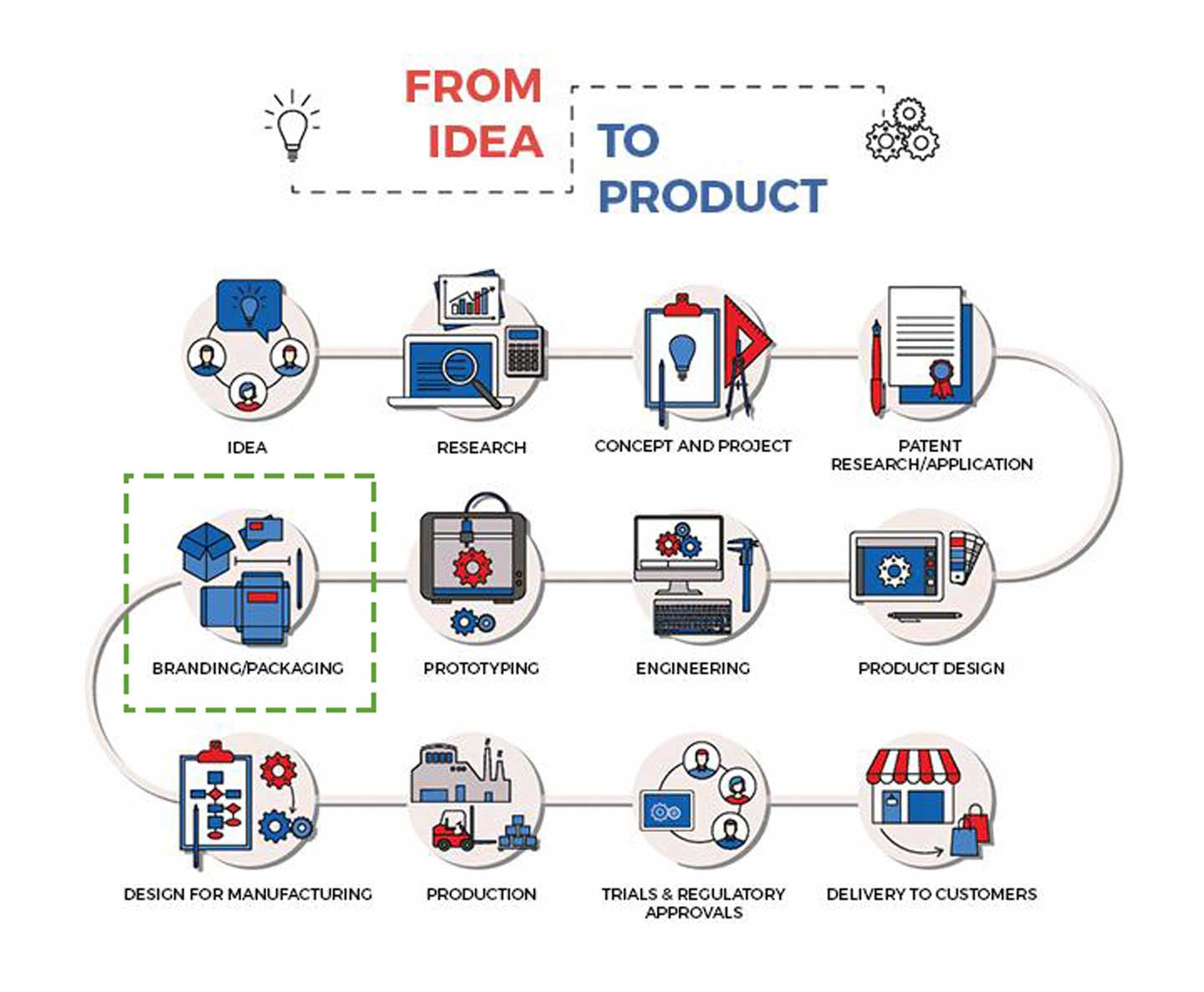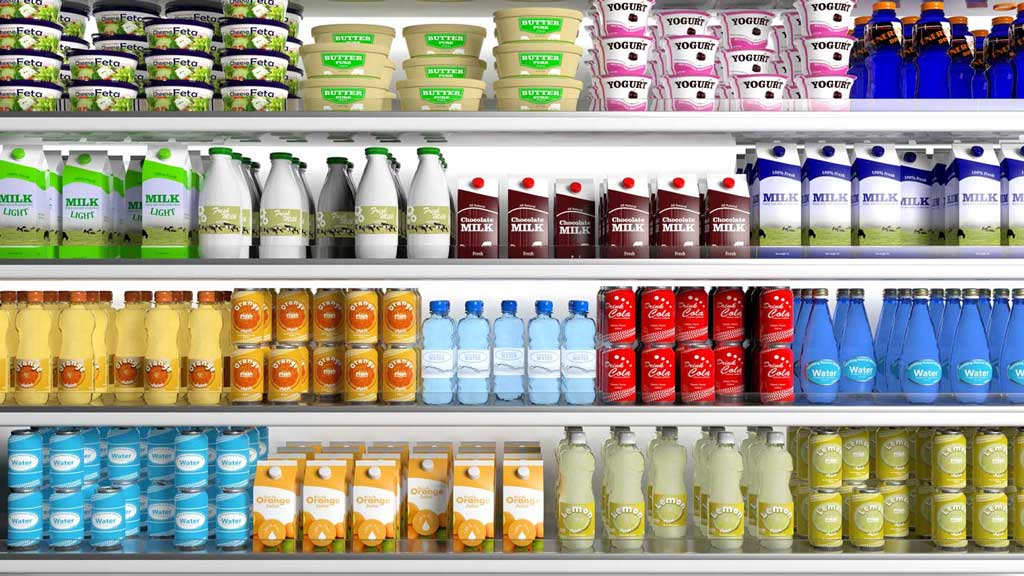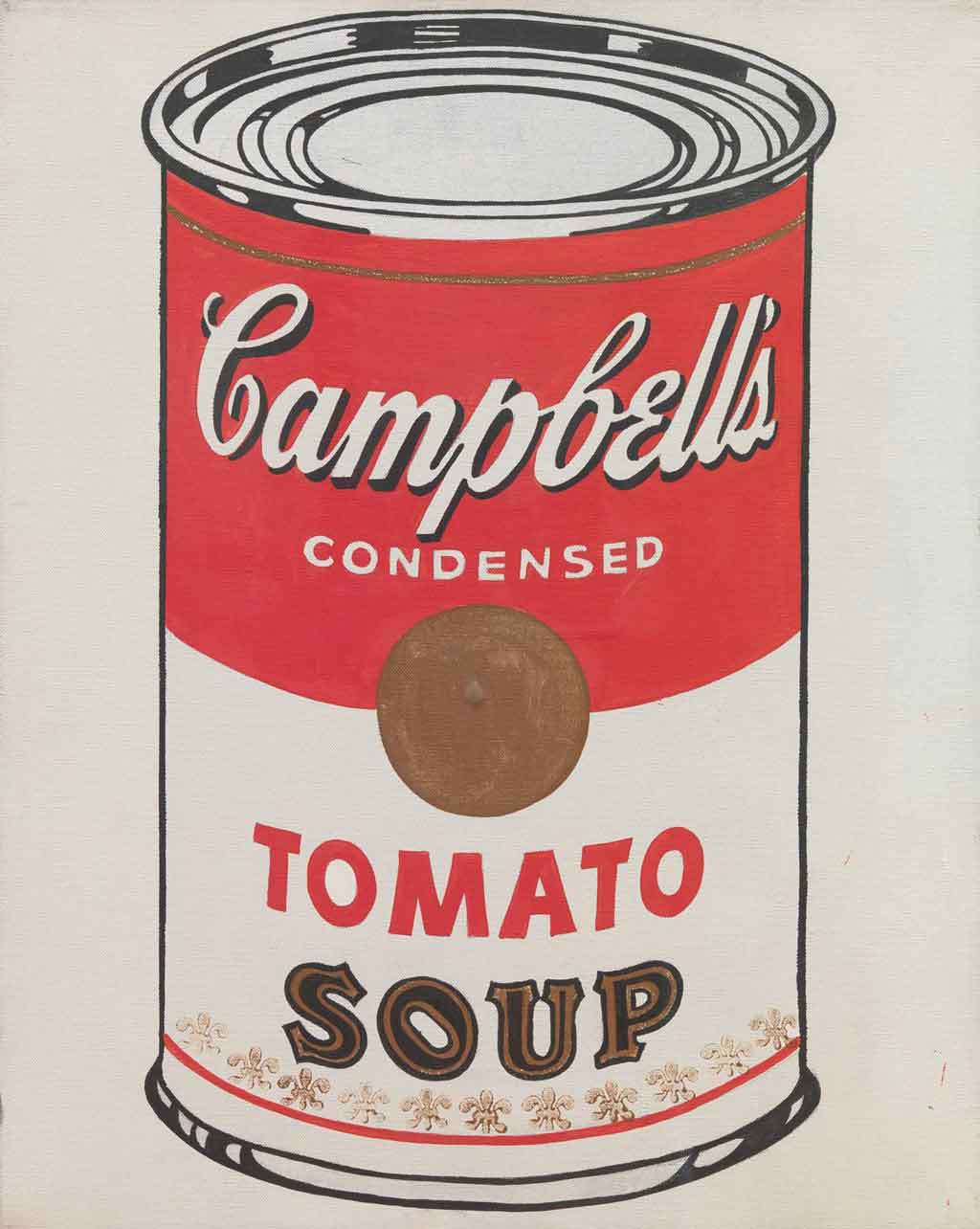Increasing your product’s consumer value
In this blog series, we deep dive into each stage of the idea to product lifecycle, from identifying a problem and formulating an idea through production and marketing. In each post, we’ll focus on one of the twelve unique aspects of the cycle and its impact on the end product.
Stage 8 of 12: Branding and Packaging

Designing a marketing plan for your product is just as important as designing the product itself. The decisions you make regarding the branding and packaging of your product will greatly influence consumers in their purchasing process. In the eighth stage of the idea to product life cycle, we’ll discuss the importance of brand equity.
Brand equity

In marketing classes, you learn about the term brand equity. It’s a term that refers to the value of a brand which is generated through consumer perception of the brand or product. It encompasses four concepts: brand awareness, perceived quality, brand association, and brand loyalty.
Brand awareness is somewhat self-explanatory: how recognizable is the brand name? How recognizable is the product? How recognizable is the product in its respective market? The best example of this would be Coca-Cola, which is one of the most, if not the most recognizable brand in the world, it’s even become a common synonym for its parent category, soda. Your target market should be aware of your product, especially if the market is very competitive with other similar alternatives. You must differentiate your product from the rest, and an easy way to do that is with packaging.
As we discussed in the concept and project stage, qualities like durability and reliability weigh heavily on the minds of consumers. The perceived quality of a product is extremely important to the brand equity and product sales in general. Word-of-mouth marketing is becoming an extremely important tool that businesses must take advantage of. Take Amazon’s use of customer reviews for example. This feature gives consumers the ability to report on a product they have bought in the past, either to recommend it to others or warn them against it. In this internet age, much of what we do every day is based on what others have said about it; Amazon, Yelp, and even Uber are great examples of this ratings-driven economy.
Brand association is a concept that encompasses the concept of perceived quality, but it reaches farther than just the quality of the product. Brand association refers to anything that consumers associate with the brand, both good and bad. Any negative associations that a brand or a product may have can tarnish its reputation, even if it was not directly related to the brand or product.
Brand loyalty is related to the consistency with which consumers buy one product over other similar products. Soda brands are a good example because, despite the similar taste to many consumers, one is objectively superior to the other. You’re either a Pepsi or Coke drinker, there is no in-between. Some of this may have to do with taste (although I don’t drink either, I’ve been told that Pepsi and Coke taste different), but the difference could also be due in part to the differences in branding. In the past, both Pepsi and Coke have done advertising and repackaging campaigns with a variety of famous faces to attract different segments of their target market. If you pay attention, you’ll also notice that they seem to directly compete with each other in this marketing aspect. Remember when Coke released its new cans and bottles with names on them? Shortly after, Pepsi released cans and bottles with emojis.
What makes people loyal to one brand over another can be the product itself (i.e., a taste or perceived difference in quality), but in some cases, it has more to do with the marketing efforts of the brand. This is how branding can greatly impact sales.
Make it memorable

Packaging is one of the most important marketing techniques because it’s “the only marketing medium for your brand that every consumer purchasing your product sees.” Packaging can influence a customer’s decision making when purchasing a product. With many food products, grocery stores have created their own generic brand of similar products at reduced prices. When the products are so similar, some even made in the same factory, the only way for some brands to compete is to attract the customers through packaging.

When you think about product packaging, what are the brands that come to mind? For me, it’s Coca-Cola and Campbell’s Soup. What do these brands/packages have in common? They are both fairly simple designs. Coca-Cola started with glass bottles which have now become the icon of the brand’s many products that now include plastic bottles, cans, liter bottles, small cans, etc. Campbell’s has also stayed true to its packaging roots with a white on red cursive logo that is forever immortalized by the artwork of Andy Warhol. The simplistic, but memorable designs of these packages attracted customers, and as a result of the repeat and new business, both companies were able to introduce new products that made the product into a brand.
If you’re designing industrial products without the intent to sell them commercially, you may not be as concerned with the design of the product’s packaging. However, the ideas regarding brand equity are still important. By using techniques to build your brand equity, you’ll create a greater recognition for your brand, which will keep your product top-of-mind amongst your target market. This is especially important if there are other similar products already in the market.
What’s next?
In the next post, we’ll focus on preparing your design for manufacturing and ensuring it can be produced in a cost-effective manner.
























